
This website supports three options for navigating through the comic: horizontal scrollbar, left and right keyboard arrows, and dragging the comic.

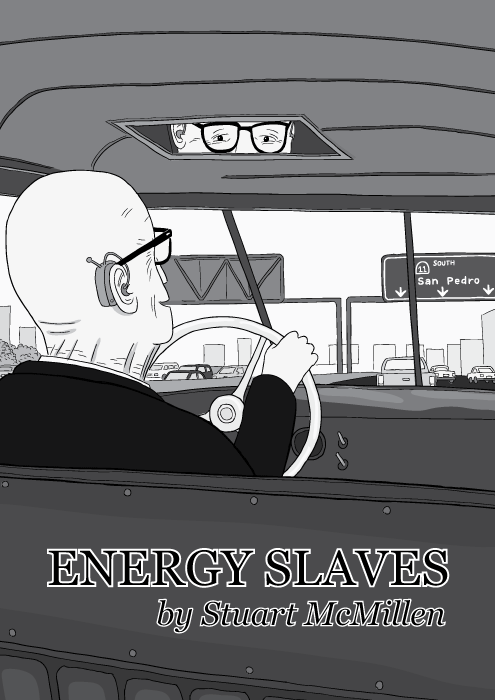
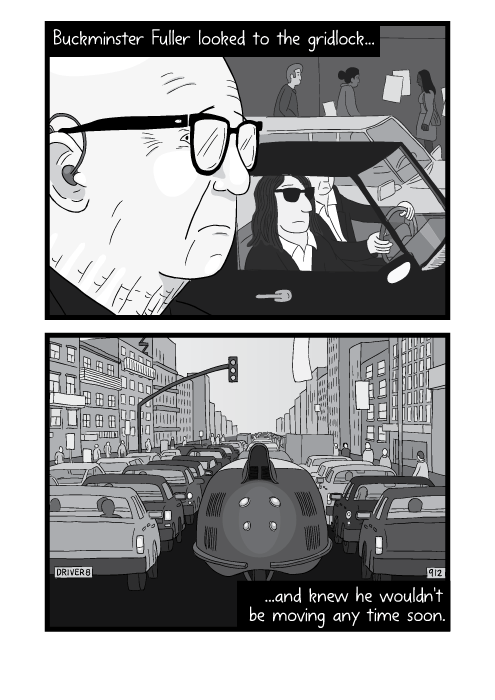
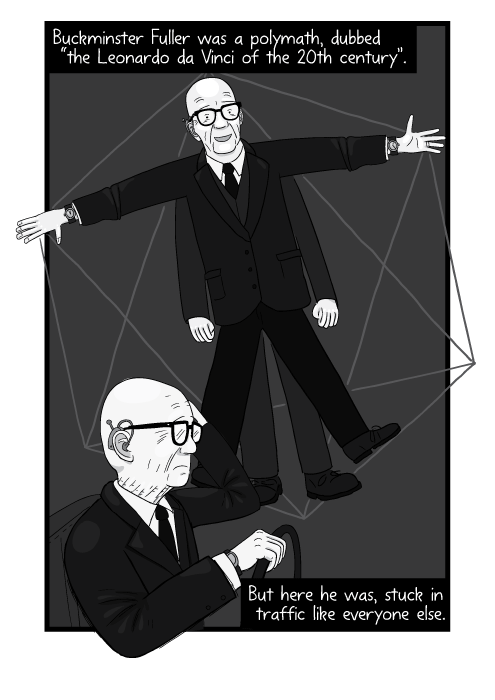
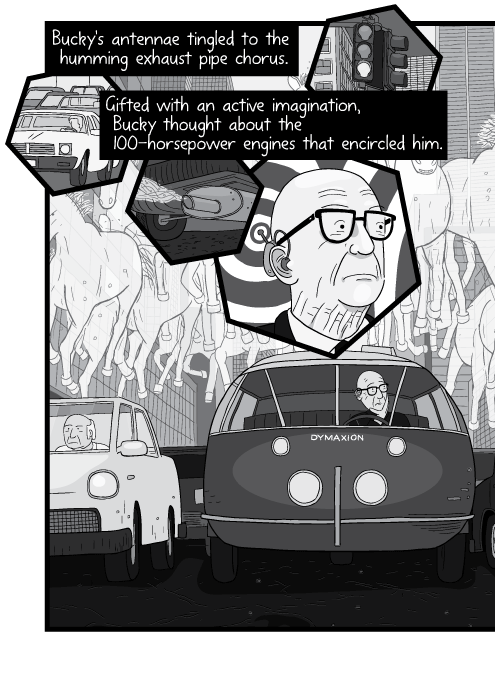
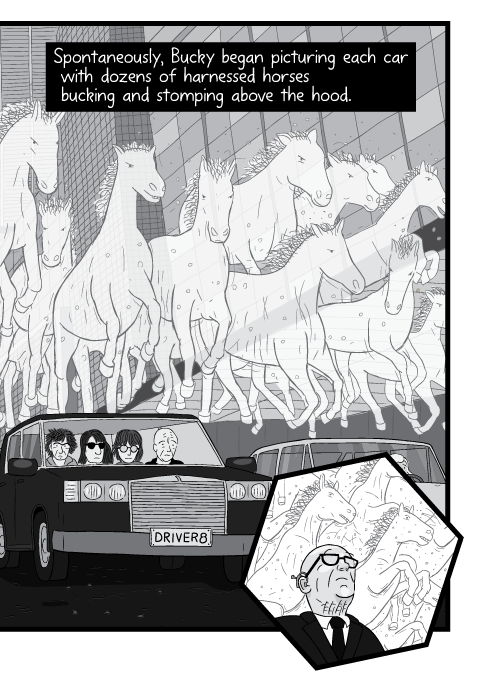
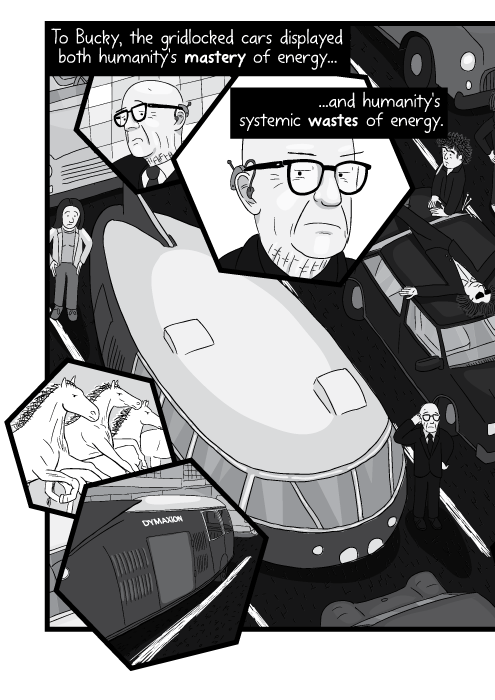
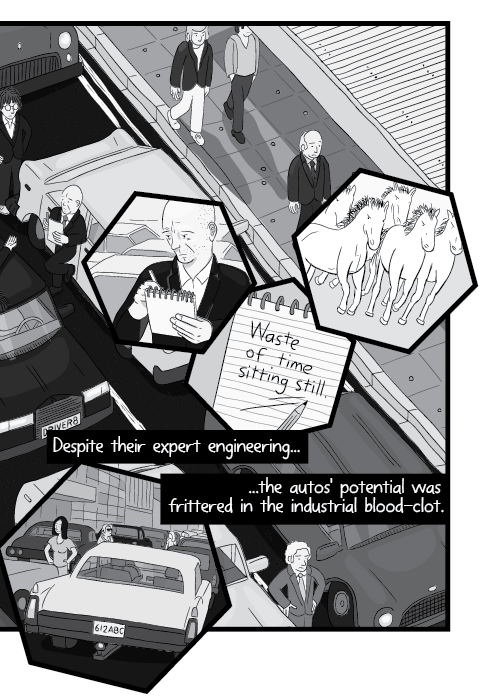
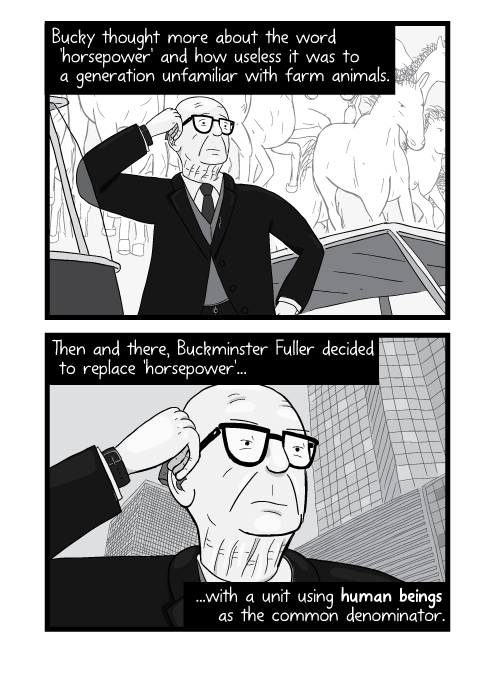
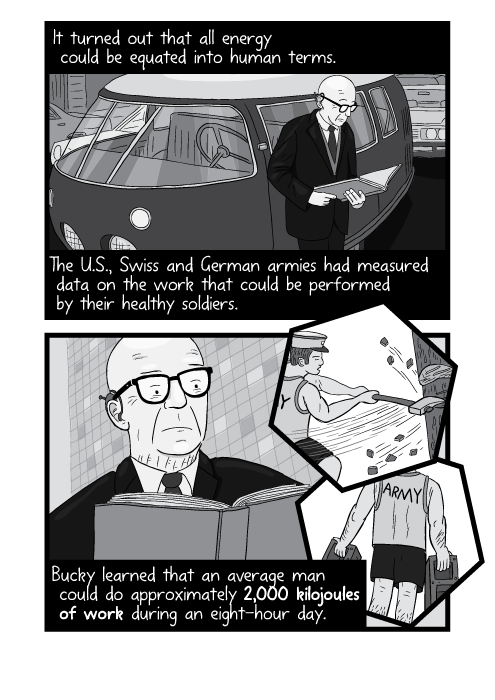
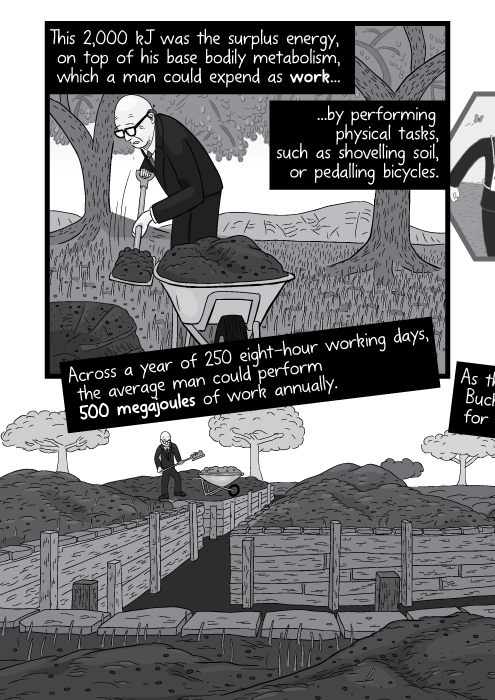
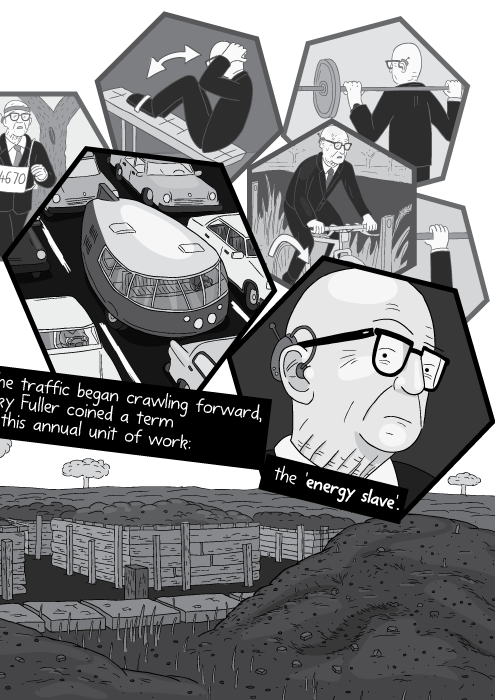
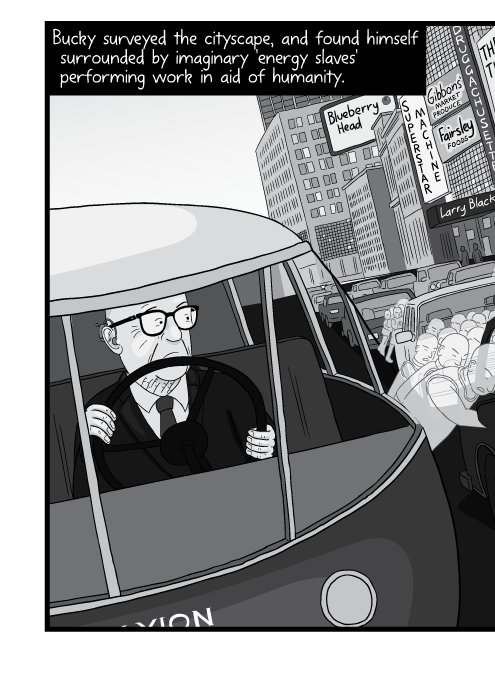
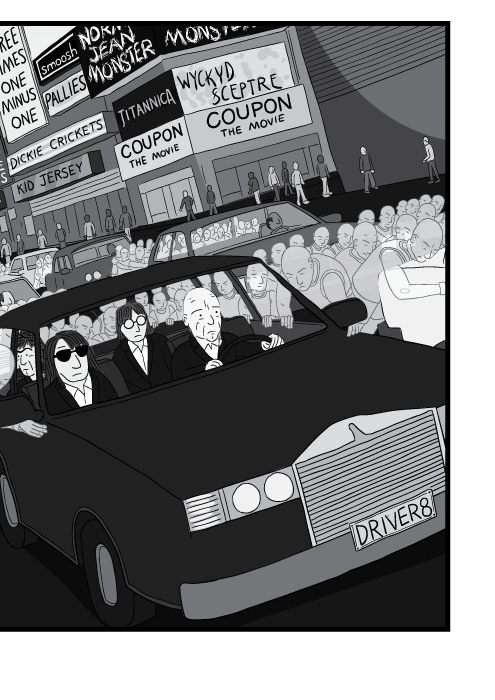
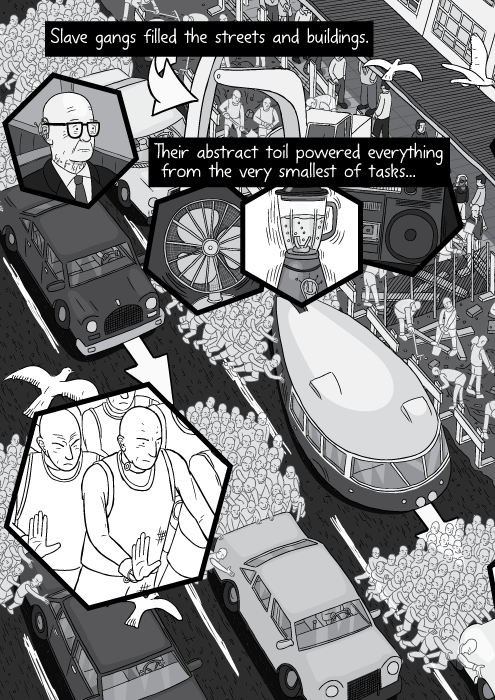
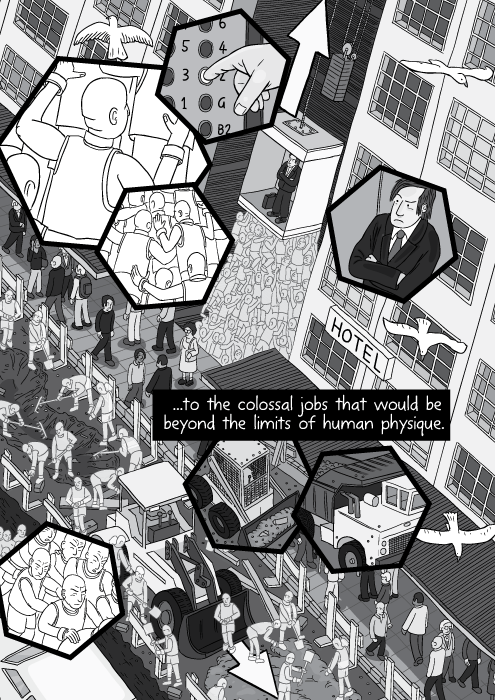

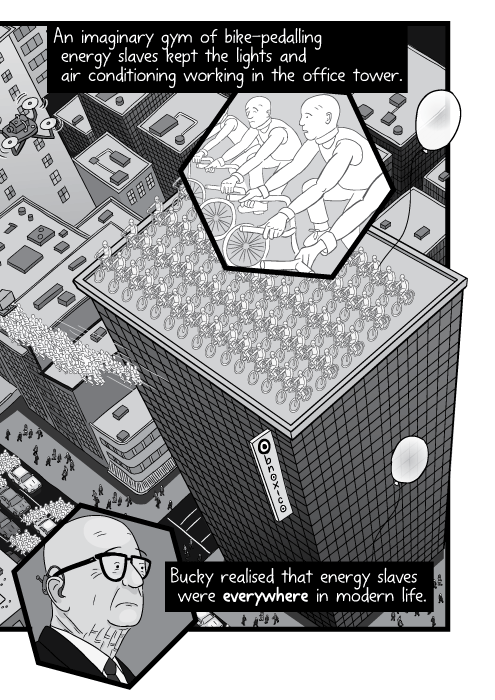
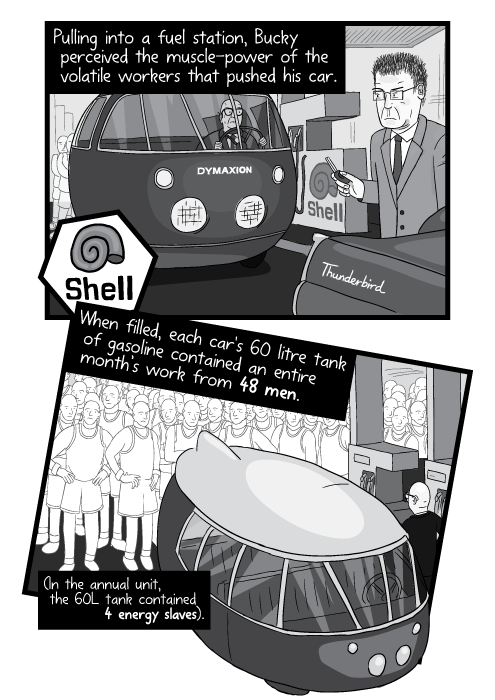
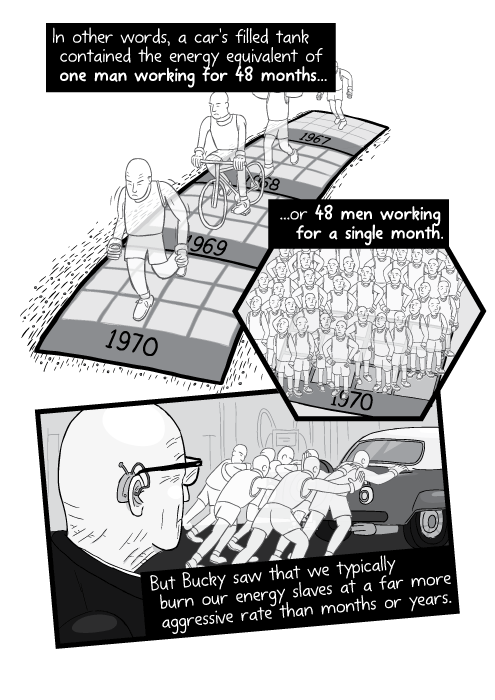
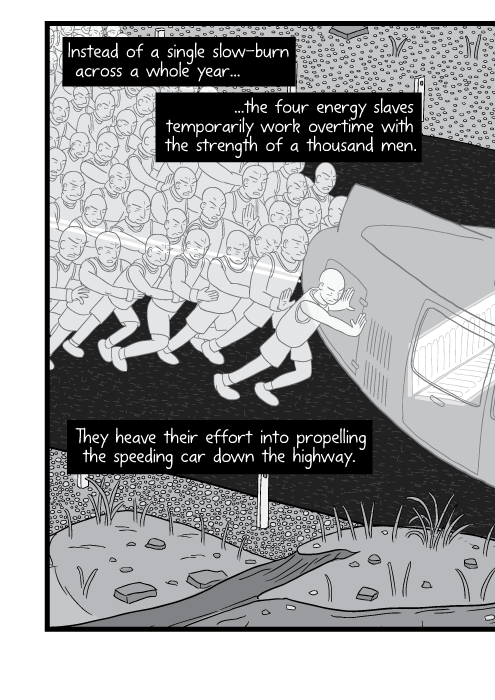
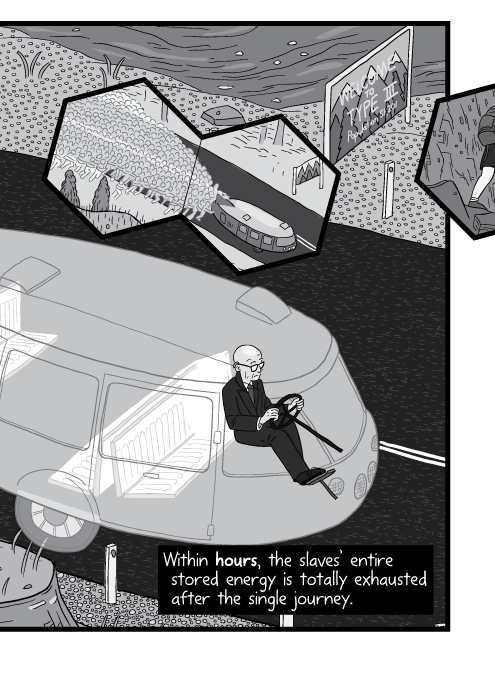
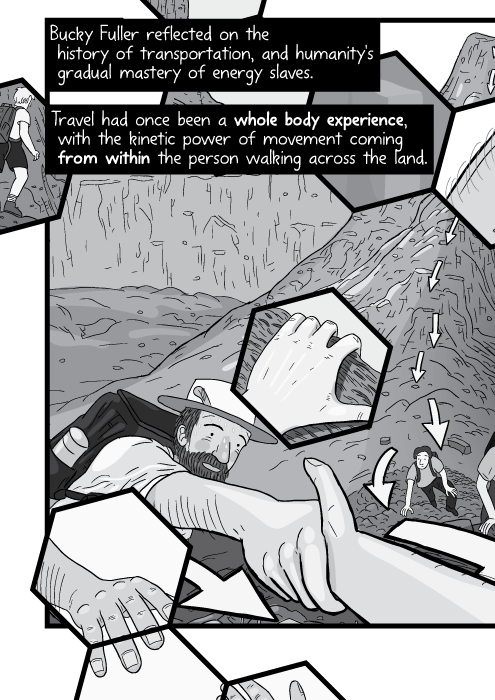
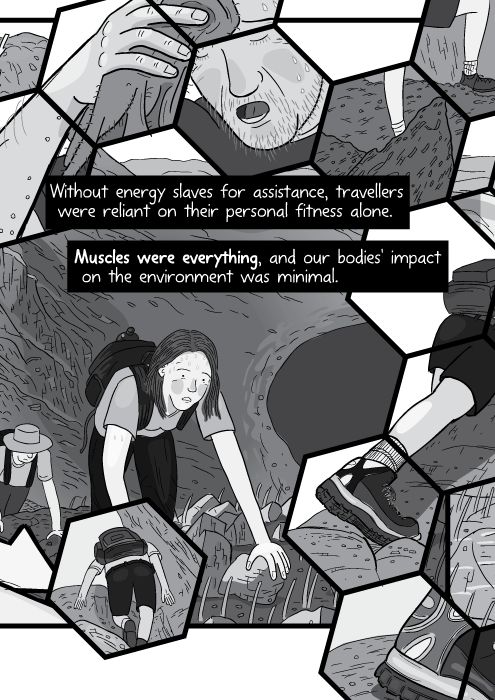
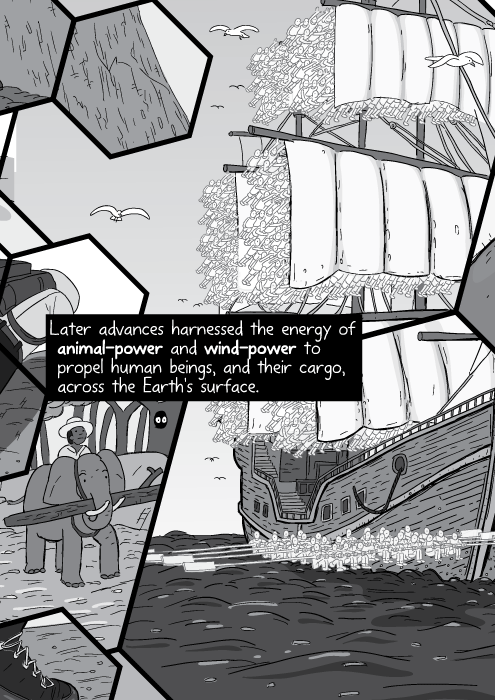
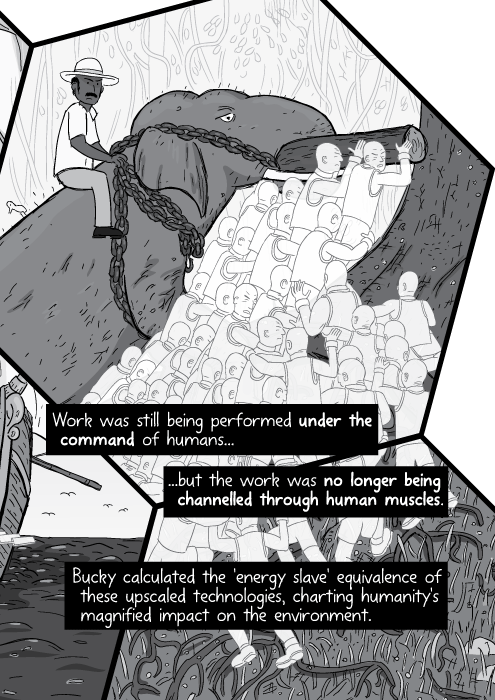
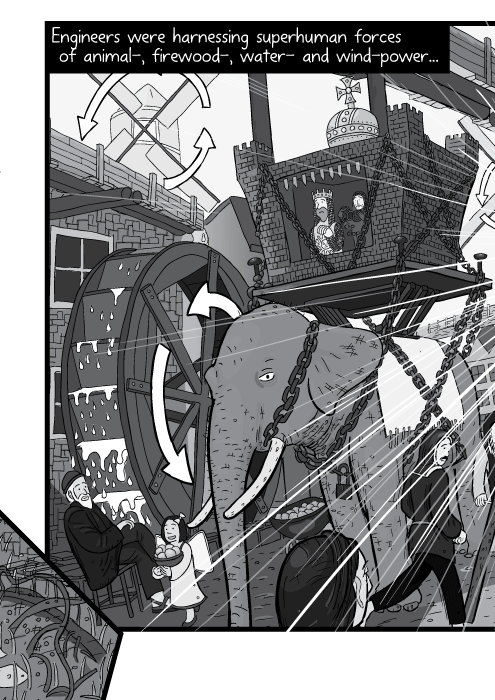
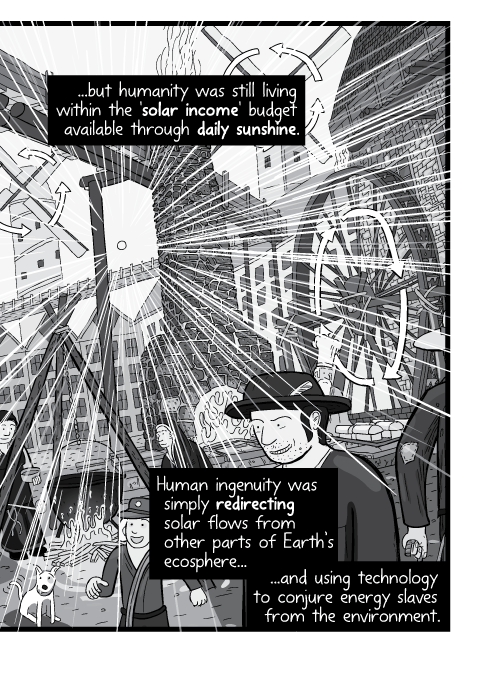
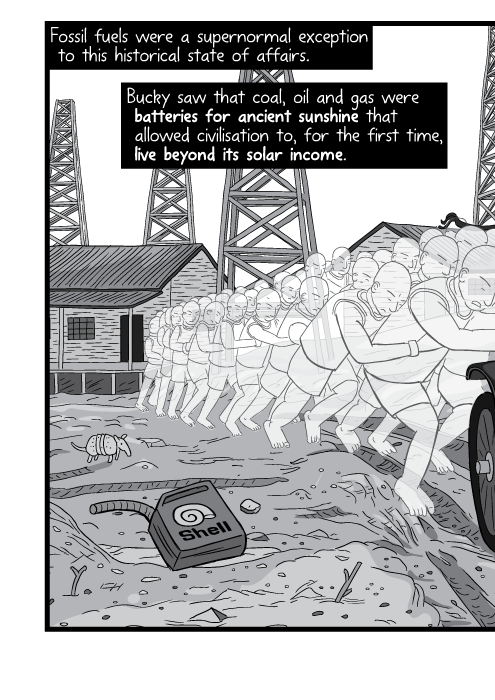
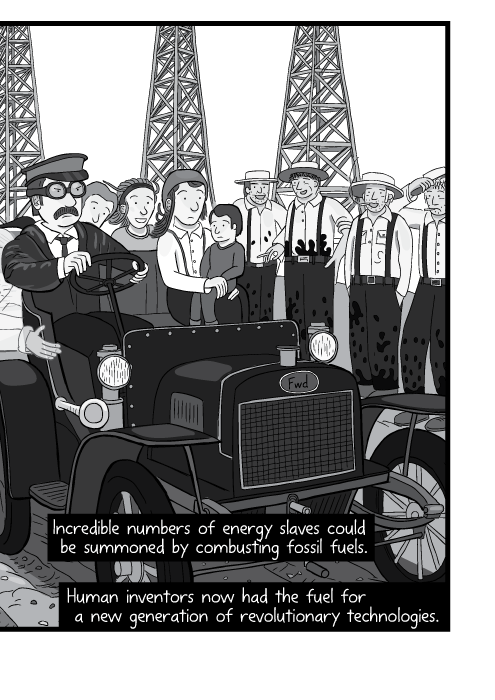
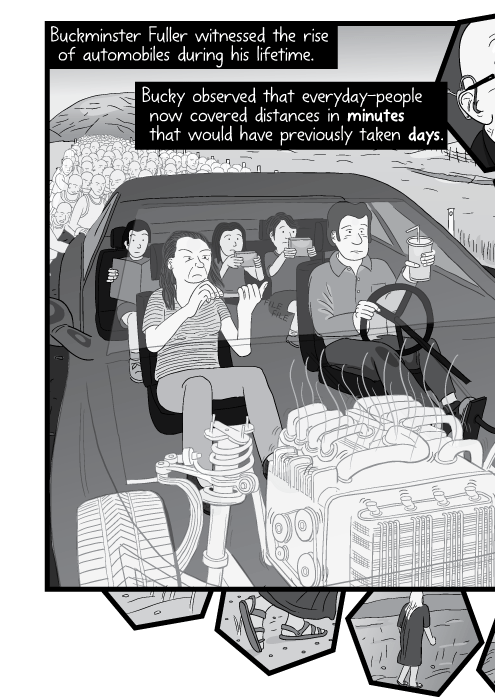
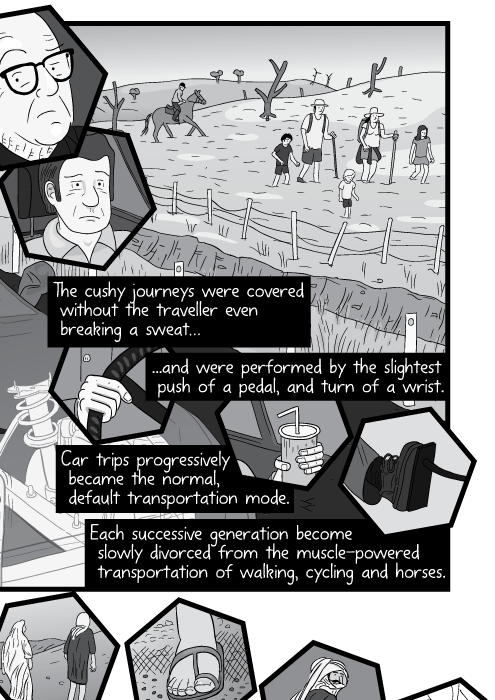

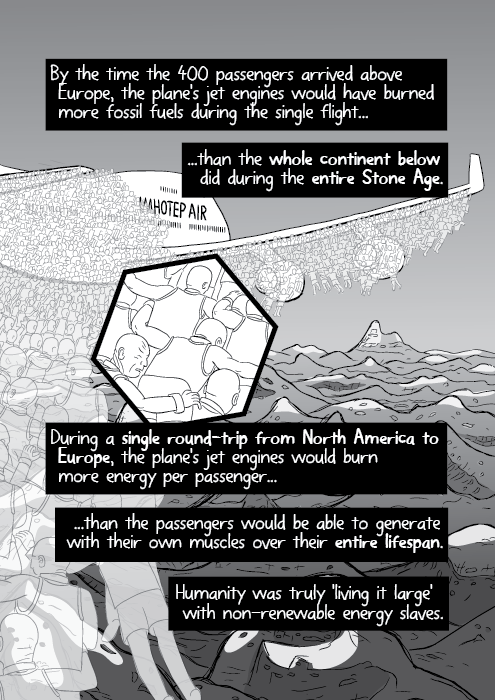
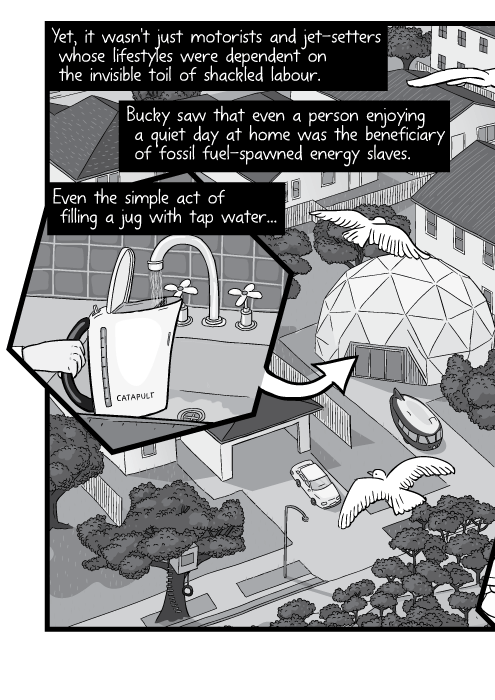
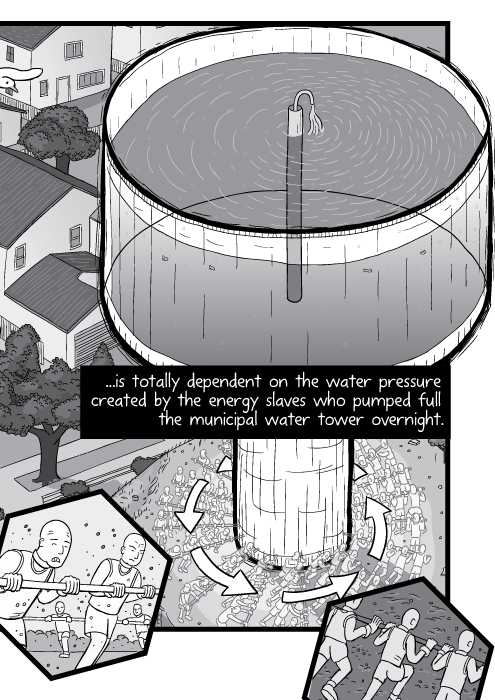
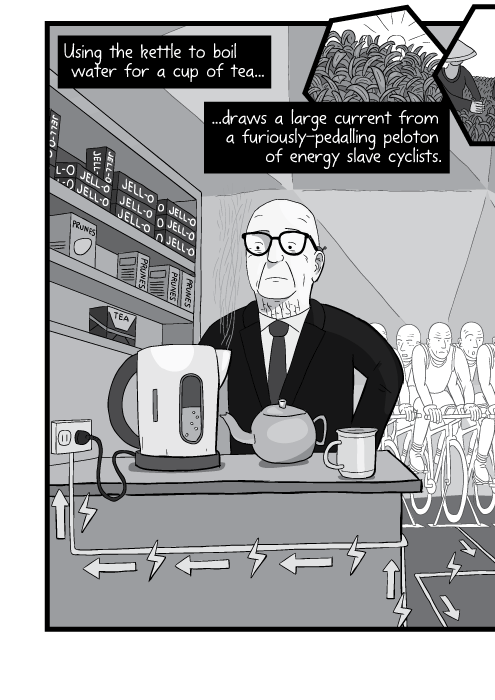
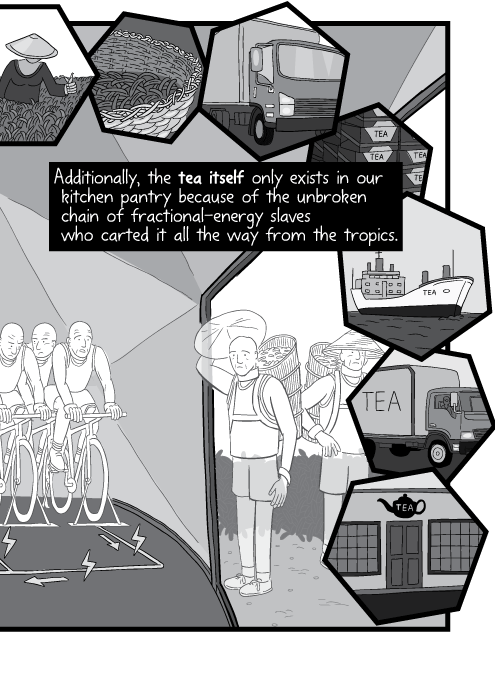
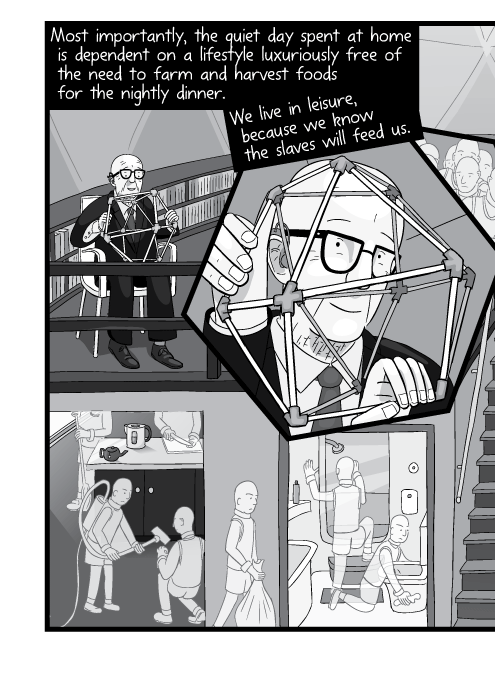
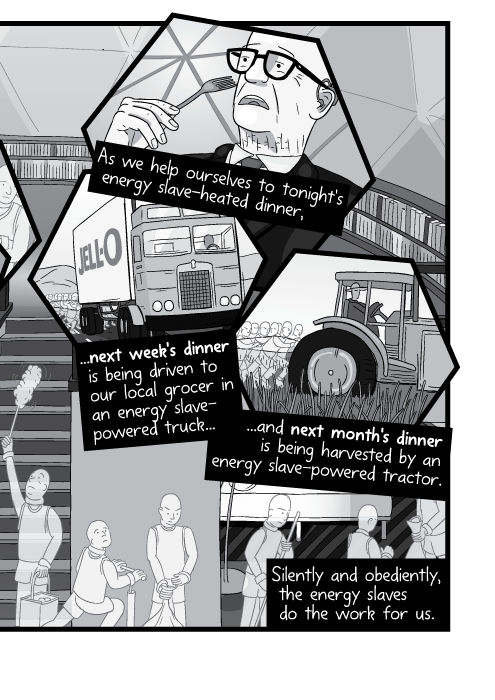
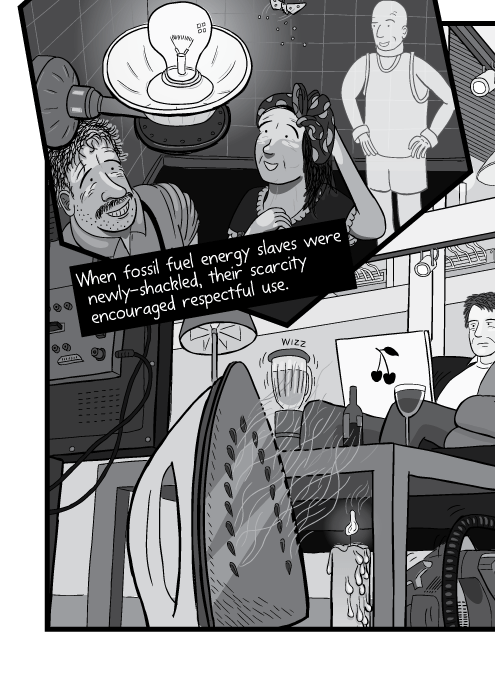
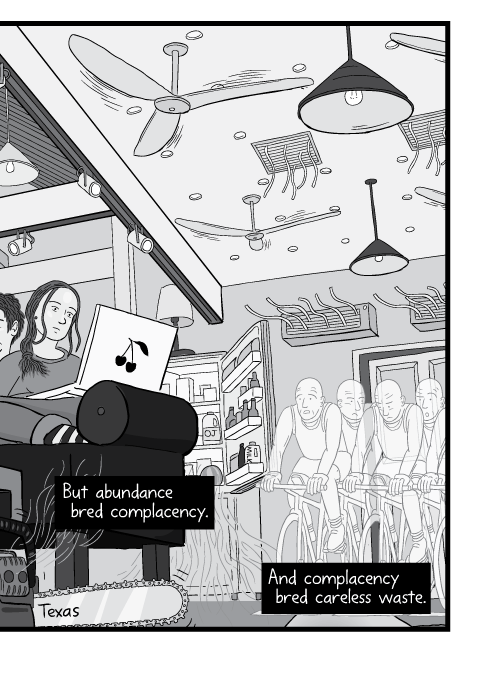
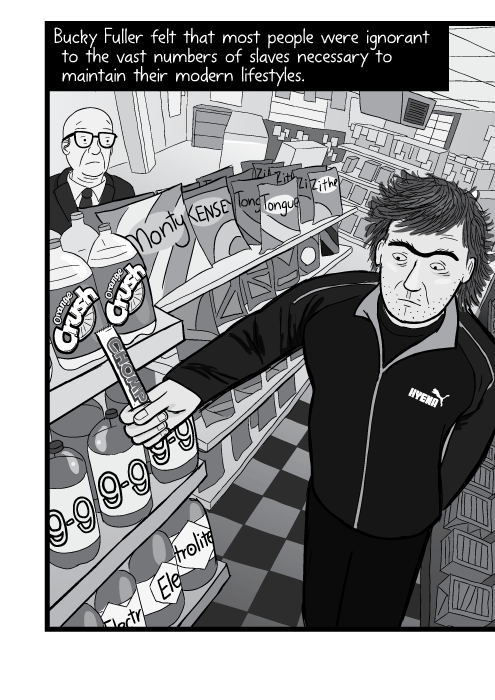
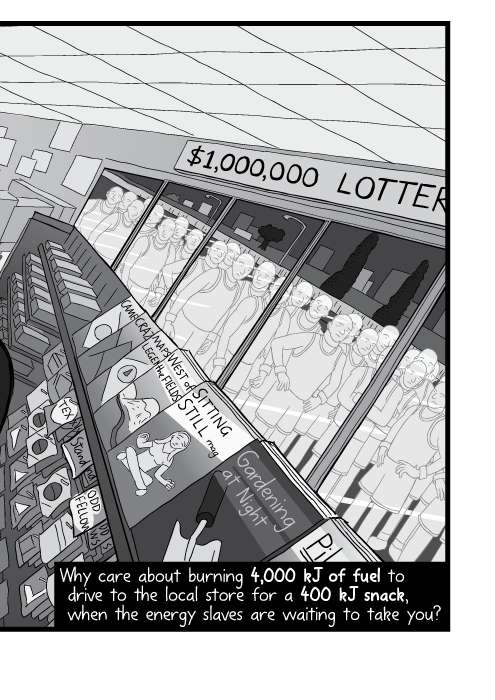
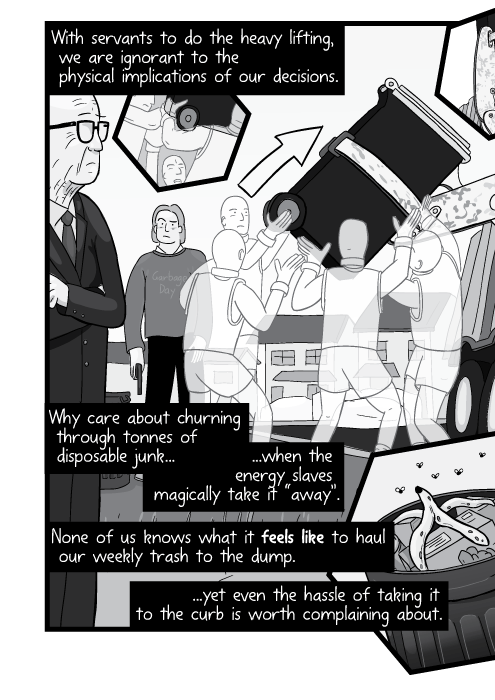
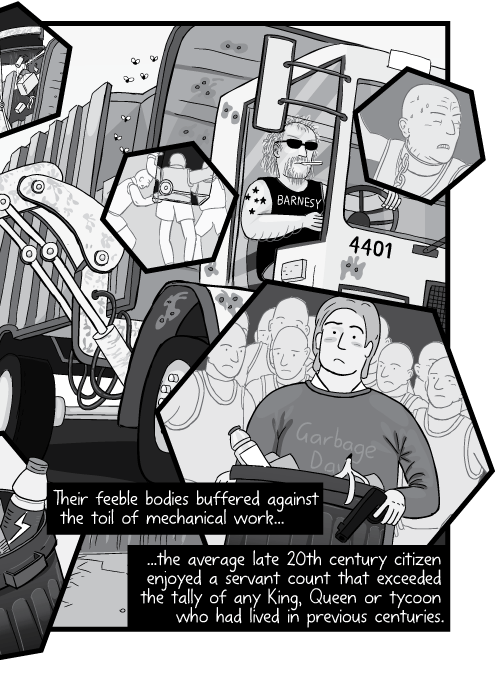
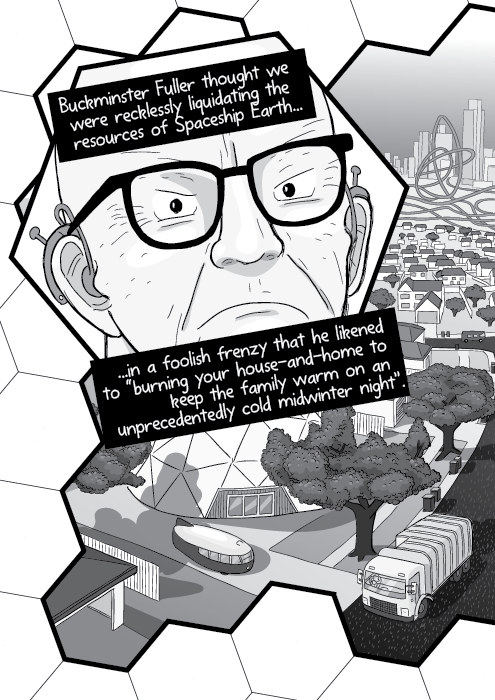
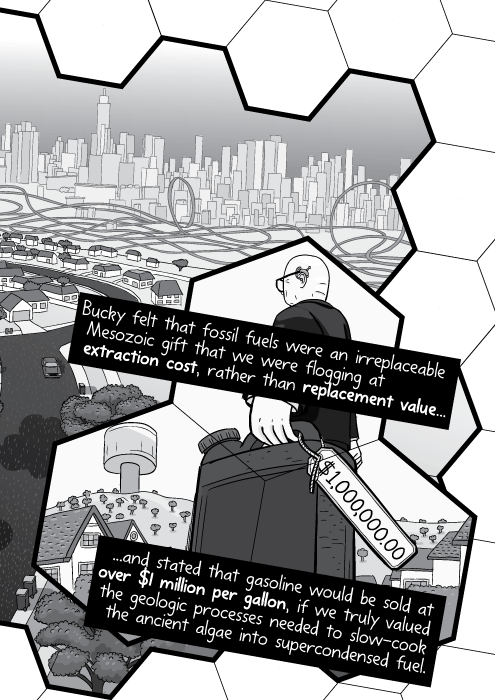
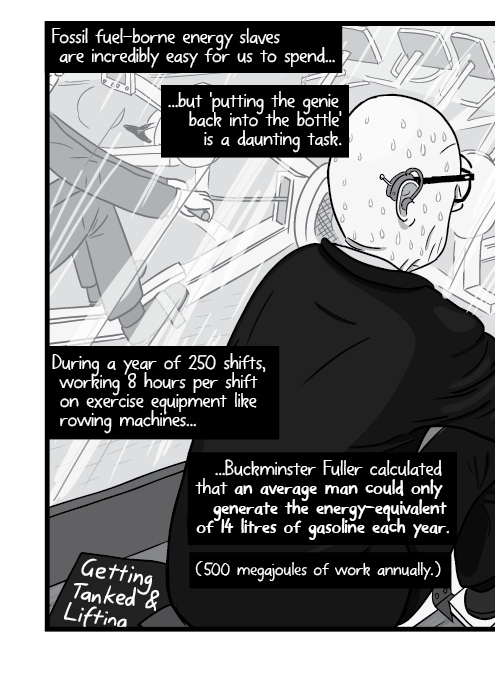
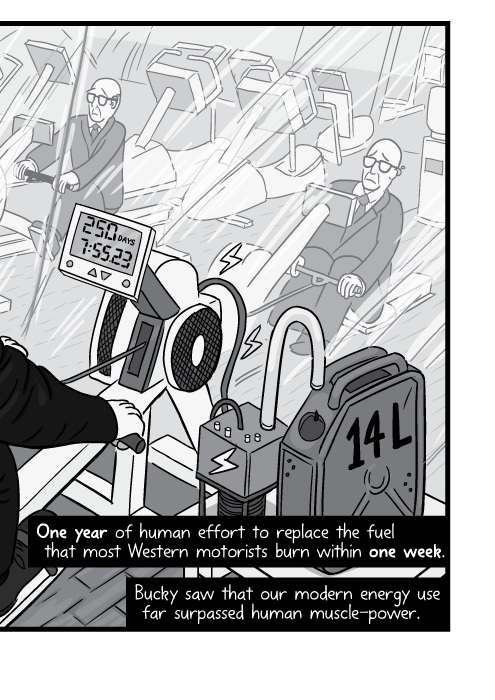
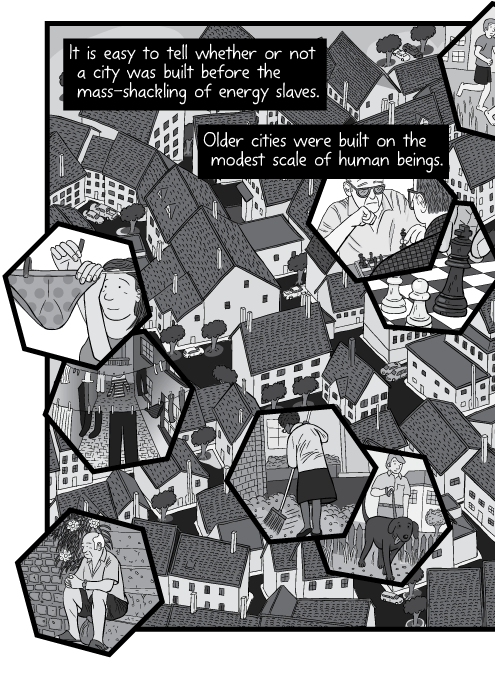

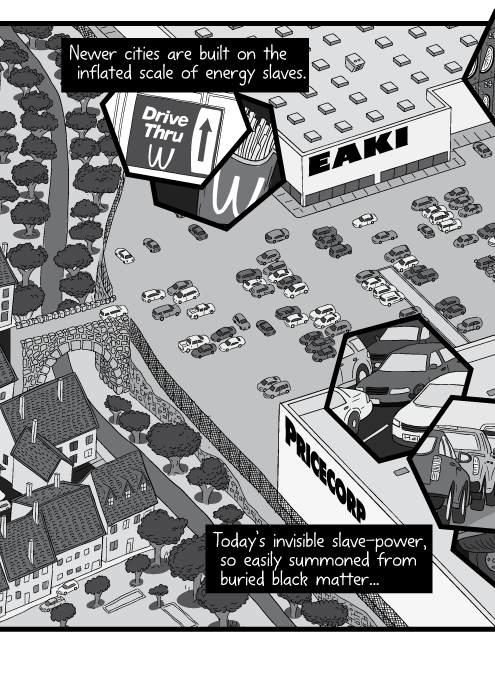
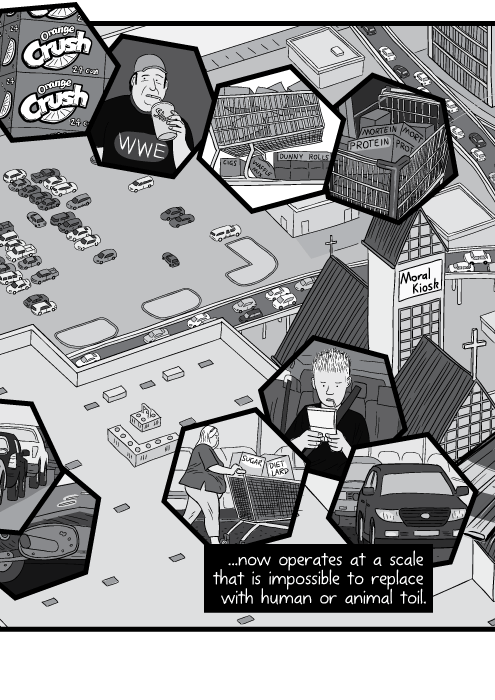
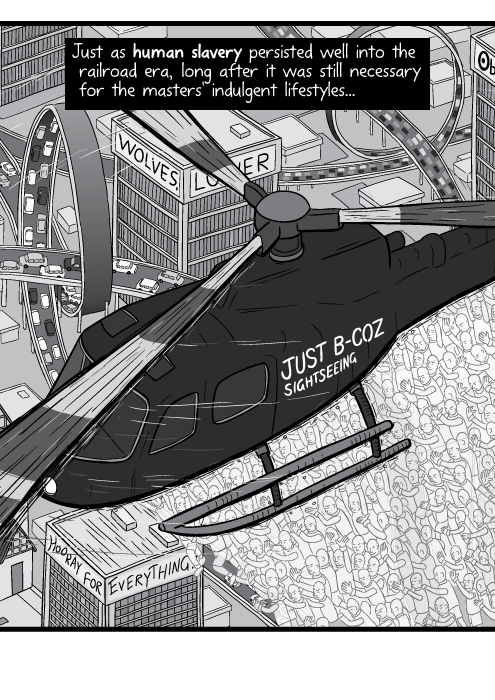
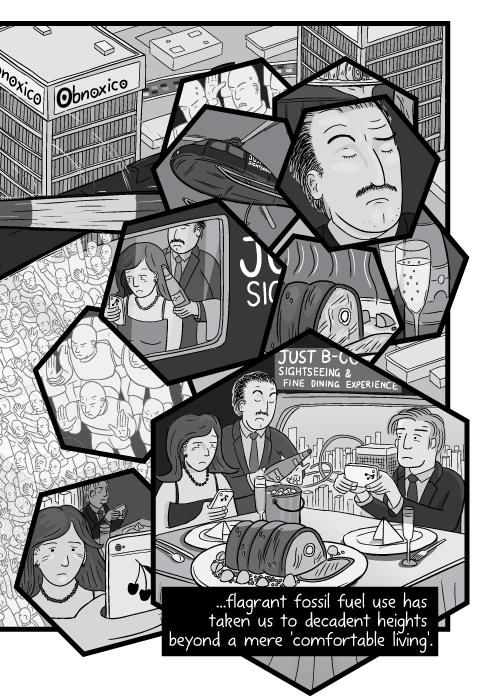
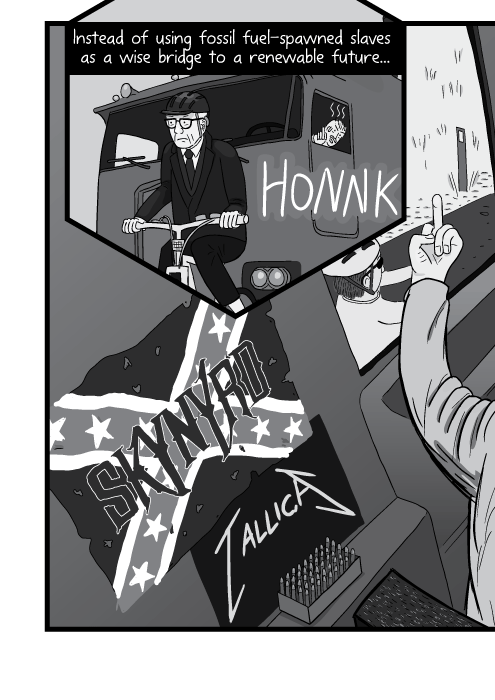

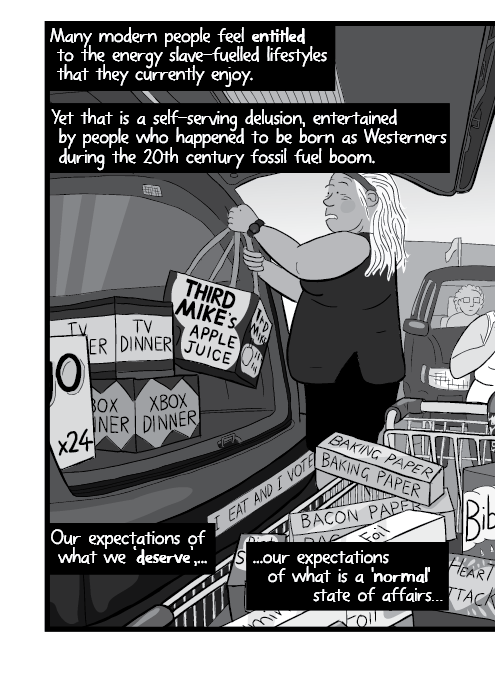

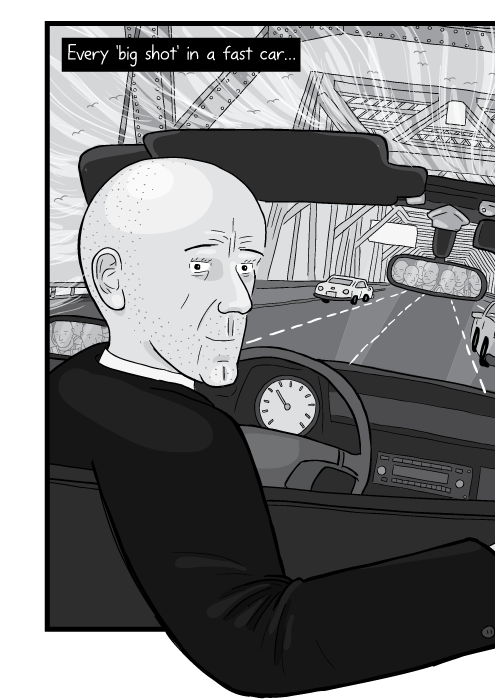
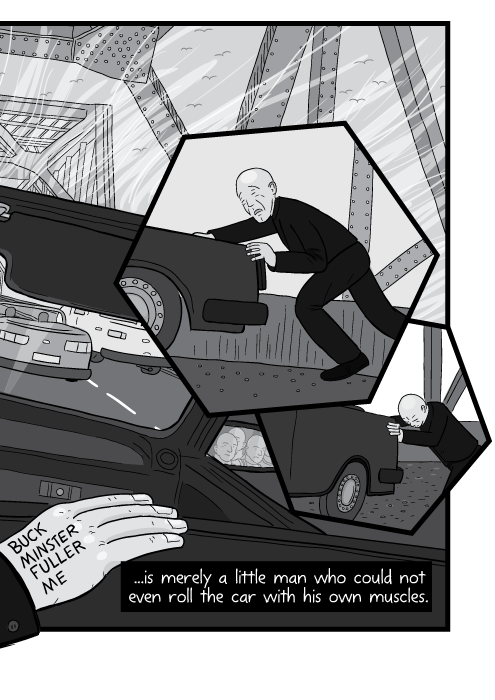

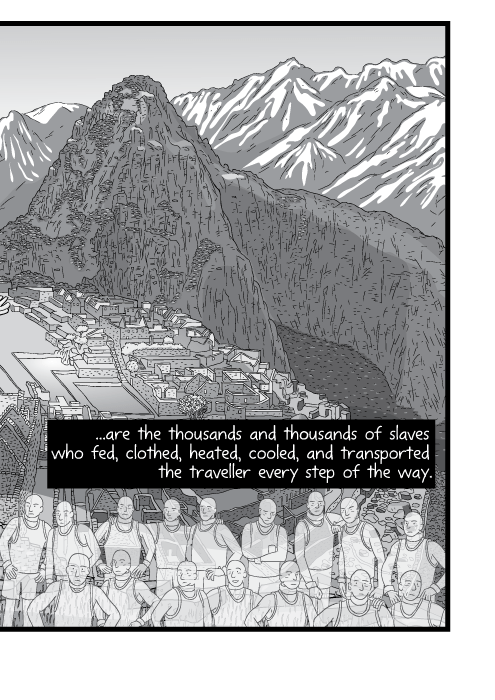
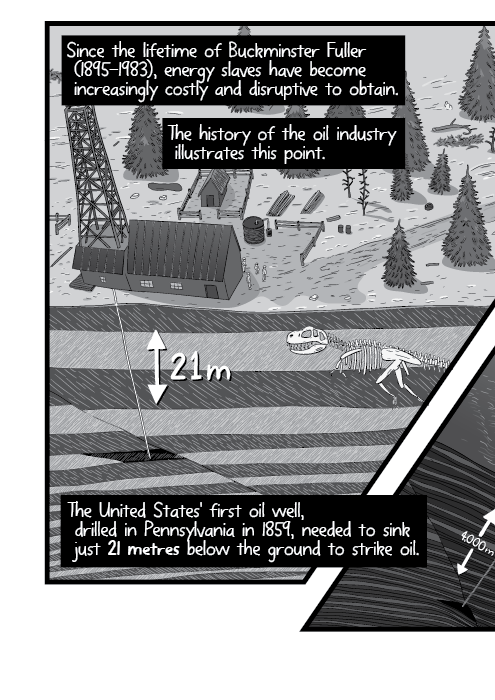
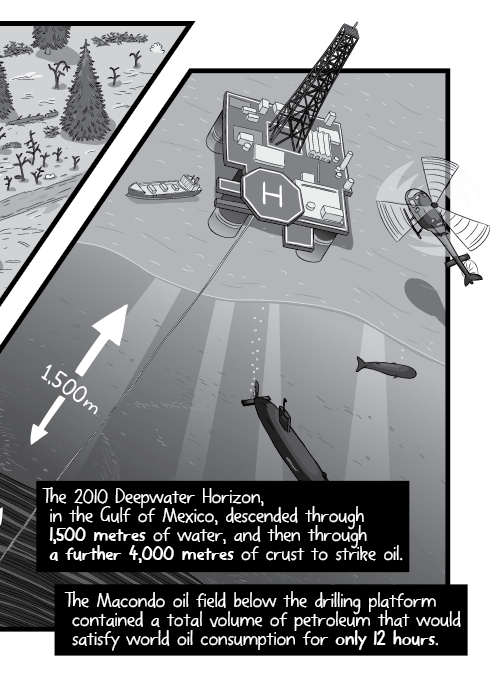
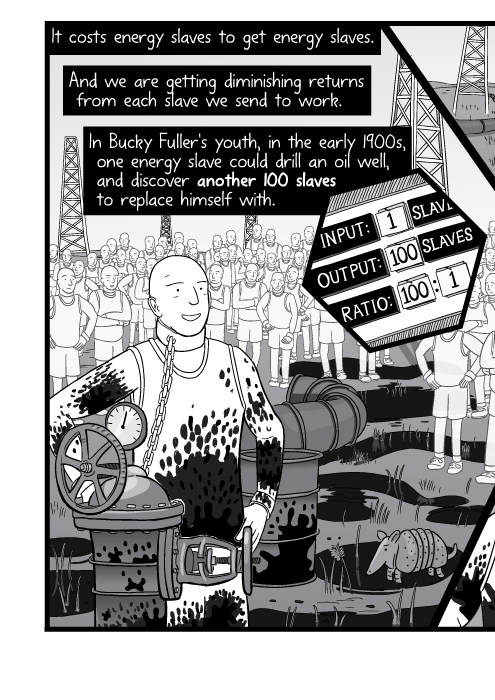
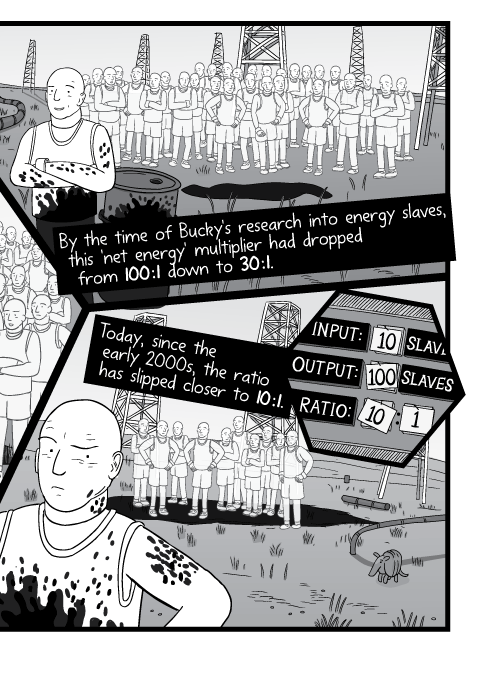
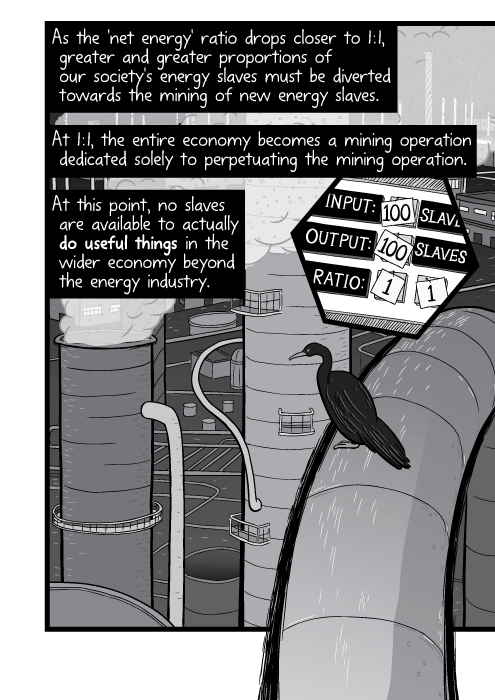
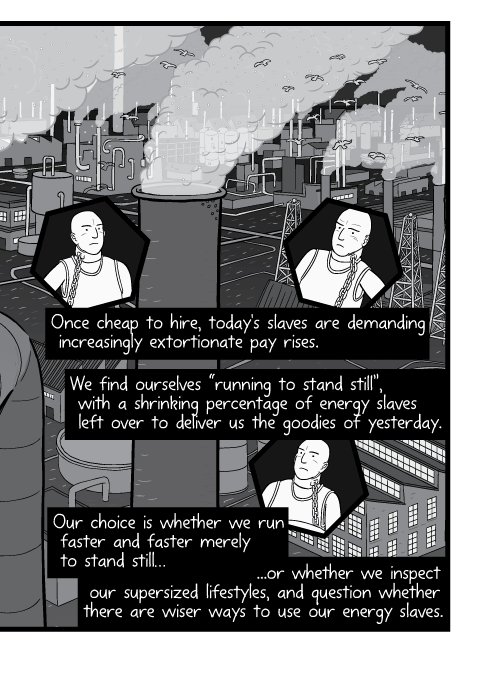
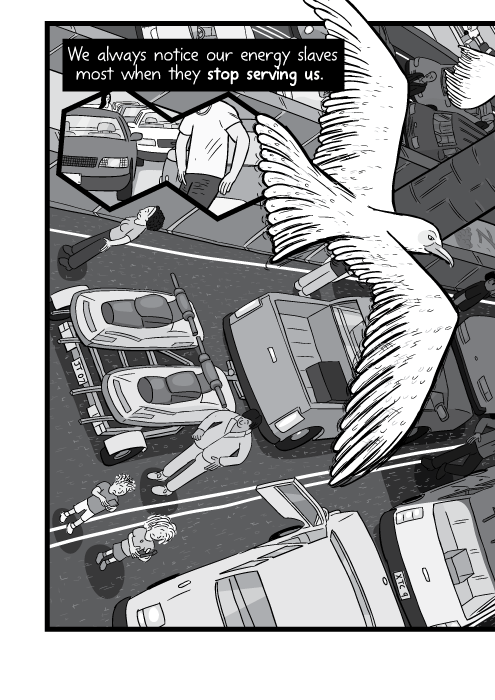
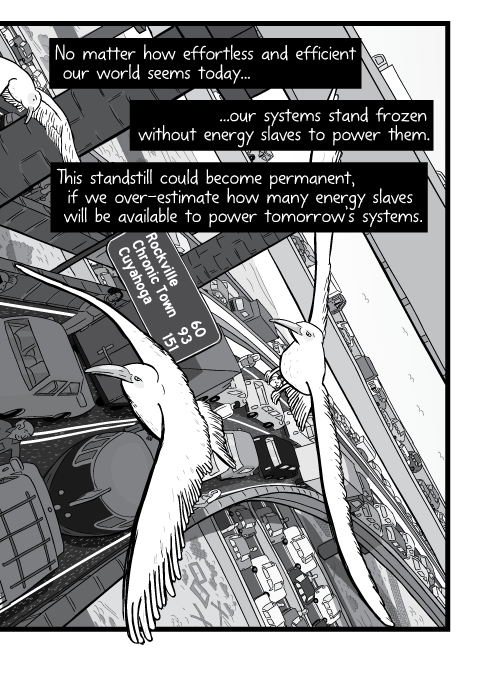
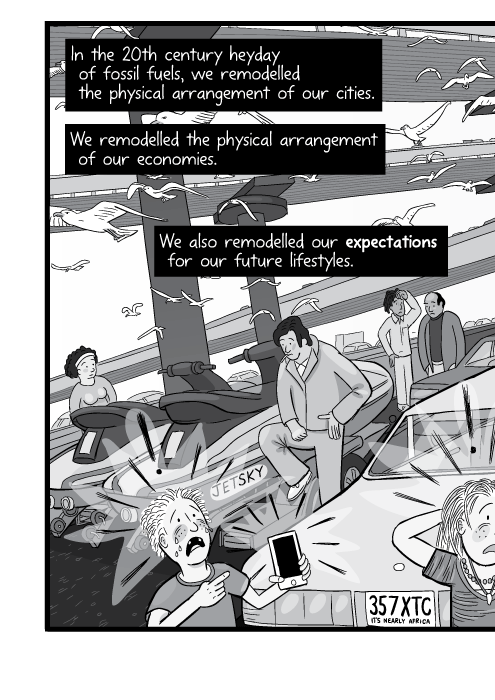
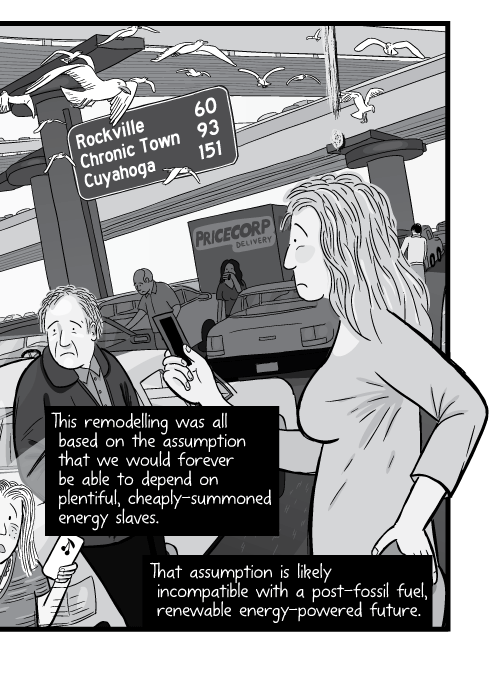
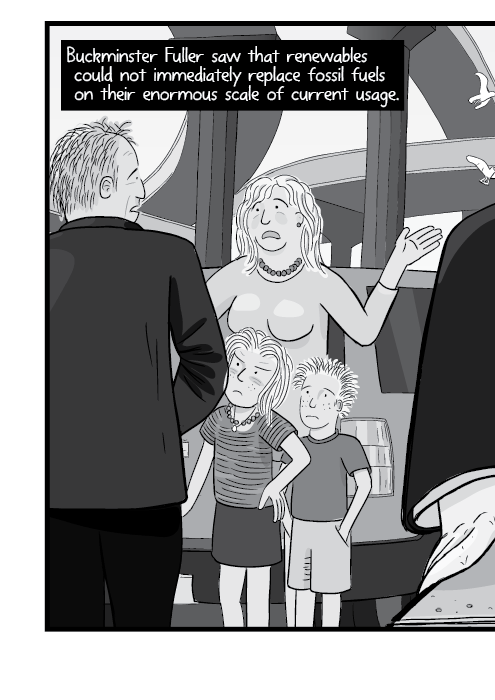
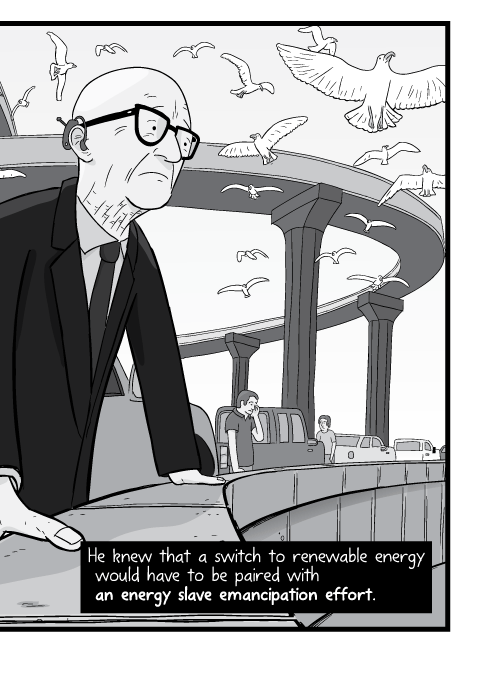
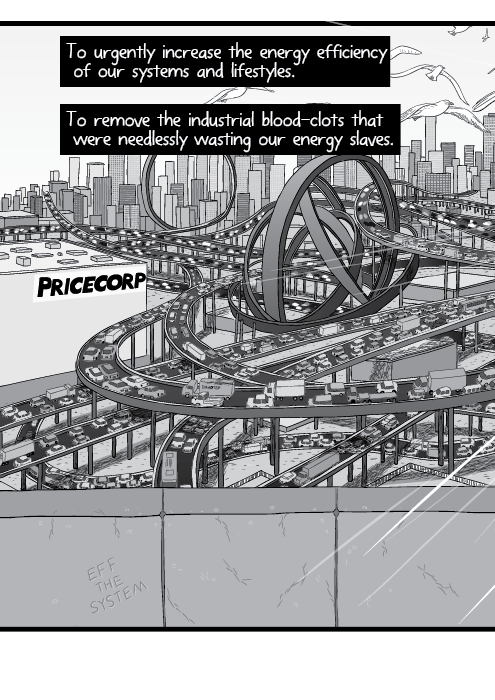
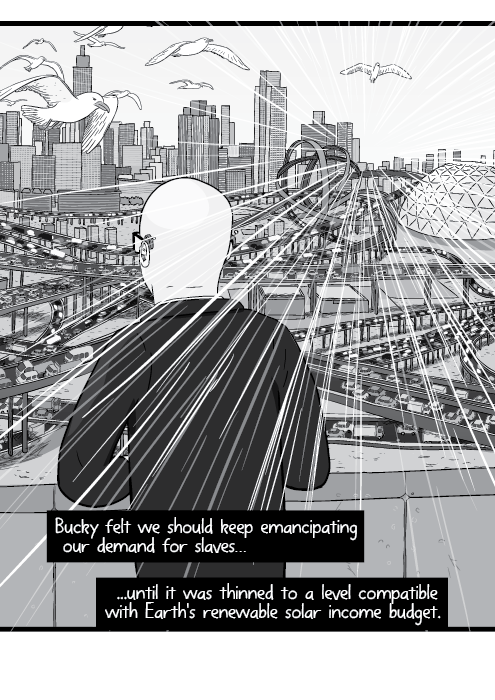
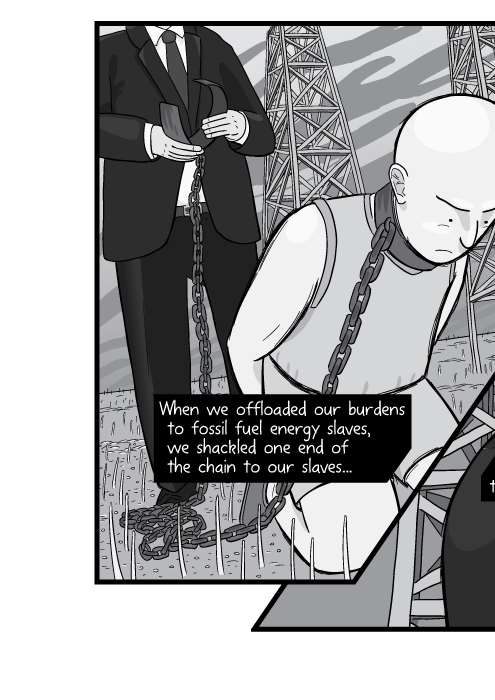

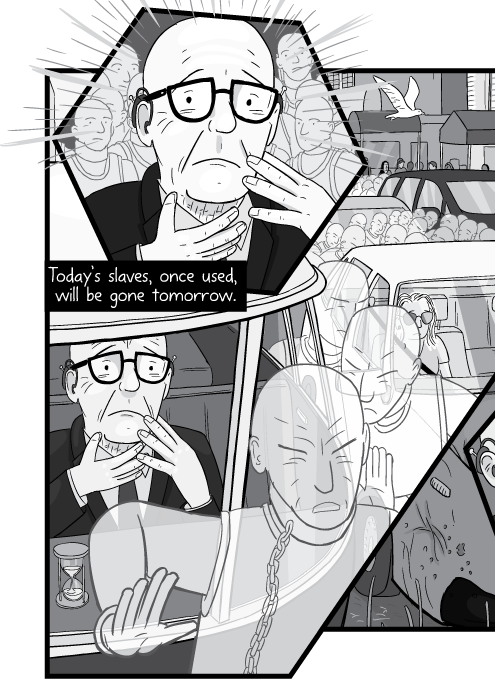
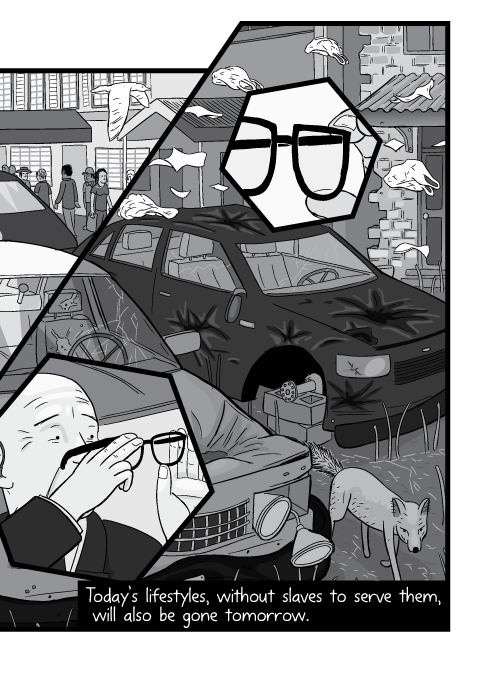
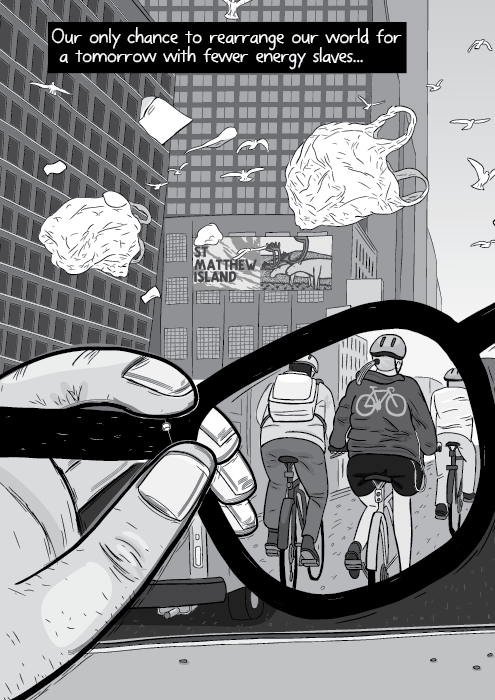
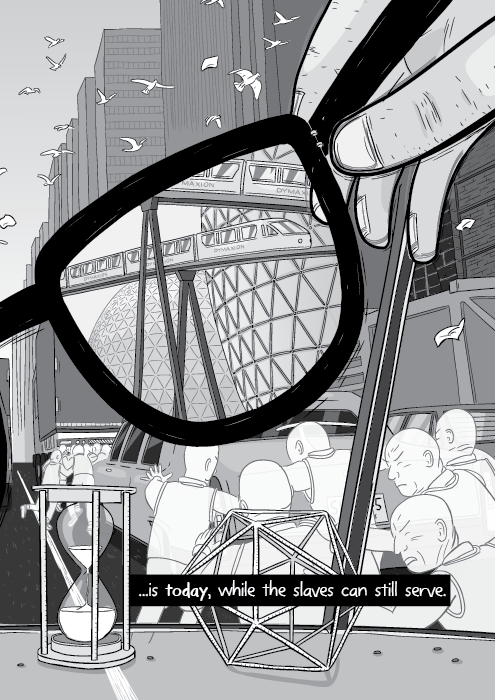

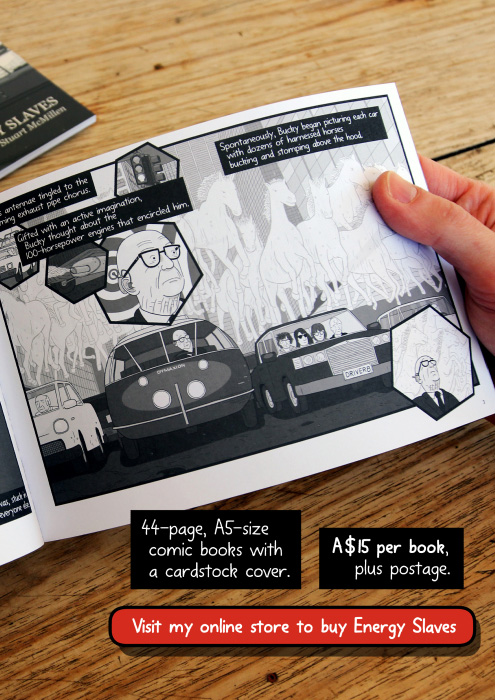



How many invisible ‘energy slave’ workers does it take to fuel our modern lifestyles? Comic about fossil fuels and Buckminster Fuller’s ‘energy slave’ concept. Buy a printed copy of this comic book.
See the Energy Slaves reference list, to learn the sources behind the numbers and facts that I quote in this comic. I also wrote a series of seven blog posts that further elaborate on Buckminster Fuller’s ‘Energy Slaves’ concept, and the creation of this comic.


Roughly half of the world’s entire oil supply is gone; half is left. How will our society choose to use the oil that remains? Comic about M. King Hubbert and his 'peak oil' theory of fossil fuel depletion.

I was interviewed about Buckminster Fuller for the podcast Utopian Horizons. In the podcast interview, I discussed the life and legacy of Bucky Fuller.

Exactly 75 summers ago, Buckminster Fuller accidentally discovered a self-air conditioning house. How did he do it?
Comments
Stuart McMillen
Testing the comments form - Energy Slaves
David Bergman
Is there any easy, inexpensive way to get this in the U.S.? Thanks!
Shayna
This was definitely thought provoking however I do agree with Kira’s comment regarding the slavery metaphor and especially the caption of “long after it was still necessary” which honestly shocked me to read.
Abhishek Shukla
Great comic! Reminds me of people skiing downhill only to take a fossil fuel powered lift to do it again.
Kira
"long after it was still necessary"? "while the slaves can still serve"? I understand the comparison to human work, which I think is interesting and useful, but I think you should perhaps consider how far you stretch this analogy. Slavery was never "necessary" and when we get into the idea of using our slaves efficiently while we still can, this starts to feel at best like a very strained metaphor and at worst like an insensitive comparison to some of the worst cruelty in human history.
Dan
Hi Stuart, saw your work profiled in Resilience.org. Brilliant comic about Bucky Fuller and the energy slaves. Please keep me updated on your work. - Dan
Katy Fox
I'm working for an association that has built an earthship in Luxembourg where we do a lot of educational work around planetary boundaries and low tech solutions, as well as climate change mitigation/adaptation for young people aged 12-30. We love your comic on energy slaves and wondered whether it has been translated to French or German at all. Also is there any chance we could use it for an upcoming Low Tech festival as part of the exhibits?
AlSeg
Found someone who share this comic, it is the perfect representation on how much of our daily lives are unsustainable for the future. Amazing, amazing story and artwork!
michal
<3 super valuable and well presented <3
Minyi
Great work!
Harriet
Your Energy Slaves story brilliantly illustrates my understanding of the power we are gleaning from fossil fuels daily. I envisioned our use of such "slaves" in 2009 after reading David MacKay's "Sustainable Energy without the Hot Air". He reckoned that in the UK we use about 195 kWh a day but our food gives our bodies only 3 kWh/day. We use two to keep our bodies at 37 degrees C. We each have only 1 kWh left for all our and mental activity every day. Without renewable energy sources, we therefore are using the labour of about 194 fossil fuel "slaves" daily. I am convinced this is one reason the emancipation of slaves in the developed world coincided with the industrial revolution. I am daily distressed to think we are asking our descendants to live with the global heating emitted by the "energy slaves" that are powering our so comfortable lives.
Eric K
Very well-done illustrations! I caught your reference to XTC "It's Nearly Africa". I'm a big fan of that band! Had to go listen to the song right away with a fresh perspective... spot on! Keep up the good work.
Ken
I second Simon's comment about purchasing in printed form... Have known about this stuff since 2005- worked at a biofuel startup then (bandaid) and bicycled since, on and off.. keep it up!
Jean-Marc Jancovici
I was stricken the first time I did the maths (my professional occupation, I might say; I am a French consultant in low carbon economy): https://jancovici.com/en/energy-transition/energy-and-us/how-much-of-a-slave-master-am-i/ But the ability to illustrate numbers is a major advantage to spread the result (I will help, modestly, in France). Congratulations! Jean-Marc
Toby
There are numerous analyses of available energy supplies. There are none that can come close to replacing the quality and quantity of current "energy slave" supplies of fossil fuels. euanmearns.org has some good info (although he tends to be a climate denier). ourfiniteworld.com is another excellent source that ties energy analysis to the global economy. Timothy Morgan's site is also good: https://surplusenergyeconomics.wordpress.com/ As is the Post Carbon Institute. If you have some specific sources you'd like people to read, you should post them. Sending people off on will google chases (ads for solar panels?) is not likely to convince people your position is well grounded. BTW, regarding exponential growth, check this out: http://www.albartlett.org/
Brian
Brilliant comic narratives on our predicament. Thank you for creating anf posting these.
Malay Dave
Hi Stuart, I have been running a core course (Energy and the Built Environment) at masters level within Master of Sustainable Built Environment program at UNSW Sydney. For the last two years I have included your 'Energy Slaves' comic as one of the recommended readings for my students. The students seem to have found it extremely effective in creating lasting impression on their minds, both as individuals and as future professionals. In their individual reflections that they write on this reading the most common word they use for your work is 'powerful'. I thought I should pass on to you the overwhelmingly positive response I've been receiving on your very clever and impactful creation. Wish you all the best. Malay
Ben
Great artwork Stuart. Looking forward to the next release. Can I suggest a comic on unsustainable housing and/or housemates?
Simon
This is great. Loved the Peak Oil also. Is there a way to purchase these in graphic novel form?